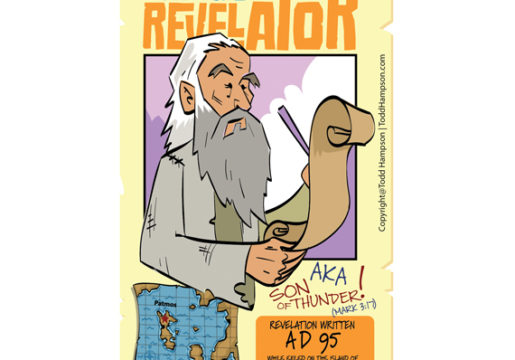

Verses 4-8 contain a wealth of additional set-up information for Revelation. Whole sermons could be preached on each verse, but since we don’t have space for a verse-by-verse in-depth study, I won’t cover them here, but I recommend you pause for a moment and read those verses slowly and prayerfully. The rich depth of what they say undergirds the rest of the book, so it’s worthwhile to take the time to study and ponder them for yourself. Notice here the identity of the audience—the seven churches in Asia Minor (modern-day Turkey). In future articles, we’ll look at Christ’s words to these churches, and the immediate and prophetic applications of those words.
The book of Revelation is easier to understand than most people think! With a little help, a little time, a little effort, and a heart seeking after God’s truth—studying the book of Revelation can be one of the most exciting adventures and pivotal actions of your life!
Verse 9 of Revelation 1 gives us the setting of the book. John wrote, “I, John, your brother and companion in the suffering and kingdom and patient endurance that are ours in Jesus, was on the island of Patmos because of the word of God and the testimony of Jesus.” Extrabiblical (outside of the Bible) sources also confirm that John was exiled to Patmos by the Roman emperor Domitian for preaching the gospel. We also understand from extrabiblical sources that John returned from his exile after the emperor died. Domitian died in AD 96, so traditionally the writing of Revelation has been dated to around AD 90-95.
The apostle John wrote five books of the New Testament, including Revelation. John was a Galilean fisherman—he was born in Bethsaida to a father named Zebedee and a mother named Salome. John and his brother, James, were early disciples of John the Baptist.
Most importantly, in terms of Jesus’s ministry, John was one of the inner circle of three (Peter, James, and John) who witnessed the transfiguration (Matthew 17:1-13). He was also self-described in the book of John as “the one whom Jesus loved” (John 13:23;19:26;21:7).
In other words, in human terms, John was close to Jesus. He was the only disciple who remained at the cross when all of the others abandoned Jesus. John was also given the task of caring for Jesus’s mother, Mary, even though Jesus had earthly siblings (Matthew 13:55-56; Mark 6:3). In John 19:26-29 we read, “When Jesus saw his mother there, and the disciple whom he loved standing nearby, he said to her, ‘Woman, here is your son,’ and to the disciple, ‘Here is your mother.’ From that time on, this disciple took her into his home.”
To learn more about the book of Revelation and how it impacts you today, purchase your copy of The Non-Prophet’s Guide™ to the Book of Revelation at your favorite online bookstore, OR VISIT: TheNonProphetsGuide.com for more information.
PLEASE share this article (right-mouse click article title above), sign up for my newsletter, follow me on social media, and talk about the book series using the hashtag #TheNonProphetsGuide
